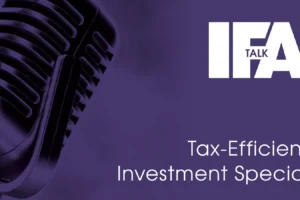The first decade of auto-enrolment has improved private pension coverage and boosted people’s pension pots. The Government should now make the next decade focus additionally on flexing pension savings – in order to address the different savings challenges that low, middle and higher earners face – according to major new research published today by the Resolution Foundation.
The Resolution Foundation’s report Perfectly Adequate? – funded by People’s Partnership, provider of The People’s Pension to 6.7 million savers – examines whether low, middle, and high earners are saving enough for a decent income in retirement, and what this means for the new Government’s Pensions Review.
The report notes that the Pensions Commission’s first landmark report 20 years ago set benchmarks for assessing whether people were saving enough for a decent income in retirement, known as target replacement rates.
These targets – achieving a pension income equivalent to 80 per cent of pre-retirement earnings for low-earners, 67 per cent for middle earners, and 50 per cent for high earners – were designed to help people smooth their incomes over their working lives and into retirement. It also added a minimum policy target of 45 per cent for median earners.
Two decades on, the report finds that the combination of the New State Pension and auto-enrolment means that workers can expect to reach the minimum policy target, and that fully auto-enrolled low-earners are on track to hit their target replacement rates upon retirement. On the other hand, middle and high earners are some way off track.
However, this does not necessarily mean that all middle and higher earning workers will face an income shortfall in retirement. The report notes that many of these workers are able to use other financial assets to supplement their savings. Indeed, a typical middle earner in their late 50s currently has enough disposable wealth, alongside their pension savings, to secure an adequate income in retirement (though people without wider financial assets remain at risk).
Furthermore, the Foundation says that while low-earners may be on track to hit their target replacement rates upon retirement, they face other savings challenges during their working lives. For example, one-in-three working age adults live in families who have accessible savings of less than £1,000.
Together, the Foundation says this means that while the one-size-fits-all approach has worked well for the first chapter of auto-enrolment, the next chapter will require both a boost to saving rates and a more flexible approach, in order to reflect the different challenges that low, middle and higher earners face.
The report says that default contribution rates into auto-enrolment should continue to rise over the next decade, initially from 8 to 10 per cent. However, the additional funds from this next phase of rising contribution rates should go into an easy-access sidecar savings account, with any balance over £1,000 then flowing into an employee’s pension.
This saving boost, combined with added flexibility, would help low earners balance building up their rainy-day savings while maintaining their current rate of pension saving. It would also help higher earners, who are more likely to already have rainy day savings, to further boost their pension pots.
The report adds that if the Government still wants to get middle and higher earners closer to their target replacement rates upon retirement, and wants to raise contribution rates ever further, it should consider doing so for higher earners only, or during middle and late working age.
The Foundation says that the success of auto-enrolment so far has laid the groundwork for delivering better living standards in later life. The Pensions Review should build on that success, but also tweak it, to complete the job of helping to solve Britain’s longstanding problem of workers not saving enough, however much they earn.
Molly Broome, Economist at the Resolution Foundation, said:
“Twenty years ago, and amid widespread concerns about poverty in later life, the Pensions Commission set benchmarks for how much people would need to save during their working lives to enjoy a decent income in retirement.
“Policies like the New State Pension and auto-enrolment have delivered on their objective of giving everyone a decent minimum level of retirement income. But the job is incomplete. And so the new Government’s Pensions Review, which could set policy for the next decade, should focus on tackling the different savings challenges that low, middle and higher earners face.
“As well as continuing to boost pension saving, auto-enrolment also needs to be more flexible. It should allow low earners to build up rainy day savings that they can draw on before retirement, while higher contributions for higher earners could help them get closer to maintaining their level of living standards into retirement.”
Patrick Heath-Lay, Chief Executive of People’s Partnership, provider of The People’s Pension, said:
“The next phase of the Government’s Pensions Review should decide what pensions policy is trying to achieve before it looks at the case for increasing statutory minimum pension contributions. As this report shows, there are compelling reasons to accelerate reform as the government’s own figures show four-in-ten people are under-saving but, it’s essential that there are clear objectives for the pensions system. It’s impossible to answer questions about whether legal minimum contributions are at the right level without first discussing what level of retirement income pension policy should actually target.
“For millions, the combination of legal minimum pension contributions and the state pension will totally determine their quality of life in retirement. Any conversation about the future of pensions saving needs to start with the question ‘how much is enough?’”














